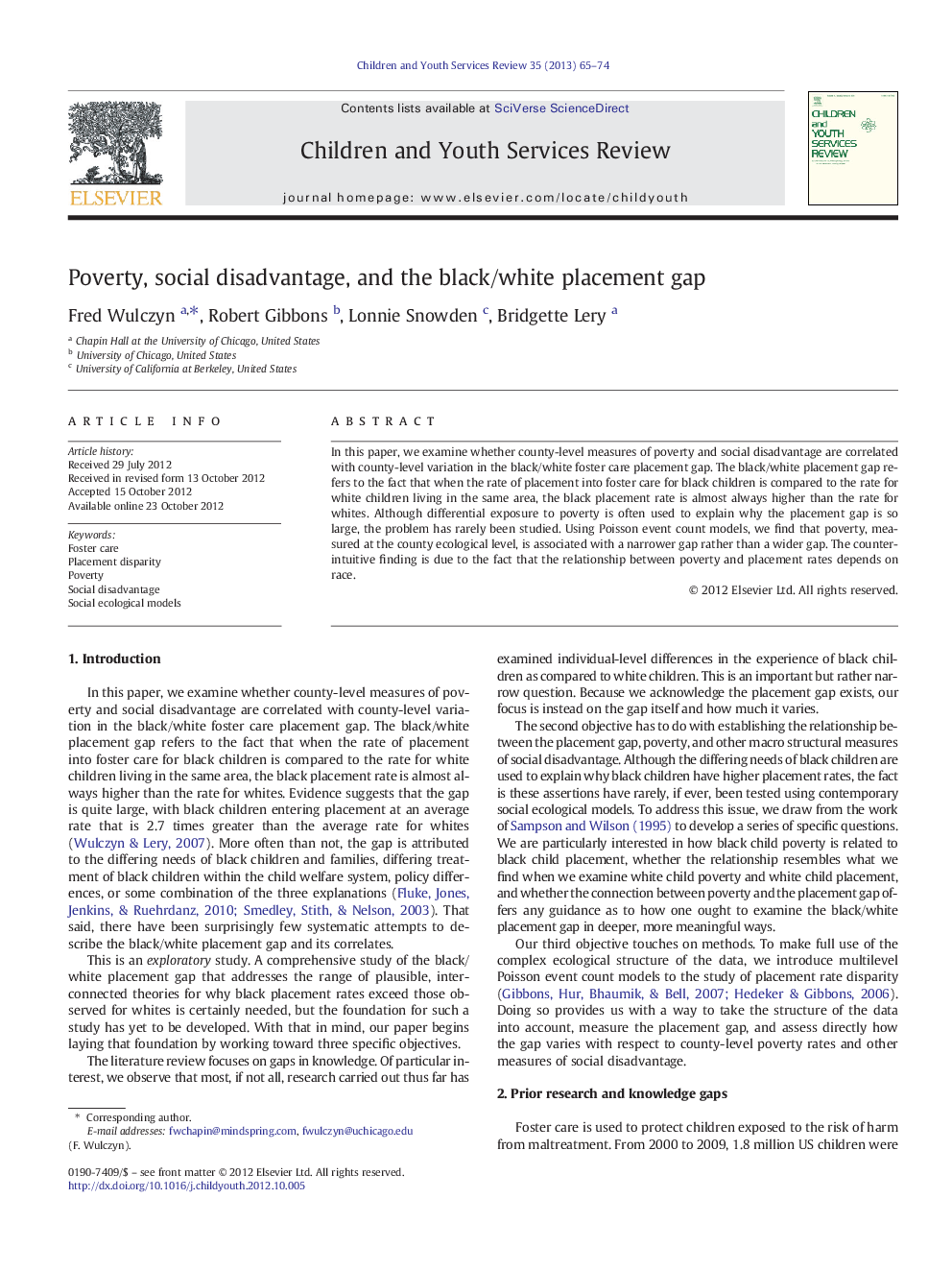ترجمه فارسی عنوان مقاله
فقر، ضعف اجتماعی و تعیین شکاف سیاه/سفید
عنوان انگلیسی
Poverty, social disadvantage, and the black/white placement gap
| کد مقاله | سال انتشار | تعداد صفحات مقاله انگلیسی |
|---|---|---|
| 37736 | 2013 | 10 صفحه PDF |
منبع

Publisher : Elsevier - Science Direct (الزویر - ساینس دایرکت)
Journal : Children and Youth Services Review, Volume 35, Issue 1, January 2013, Pages 65–74
ترجمه کلمات کلیدی
مراقبت از فاستر - اختلاف قرار دادن - فقر - نقطه ضعف اجتماعی - مدل های زیست محیطی اجتماعی
کلمات کلیدی انگلیسی
Foster care; Placement disparity; Poverty; Social disadvantage; Social ecological models

